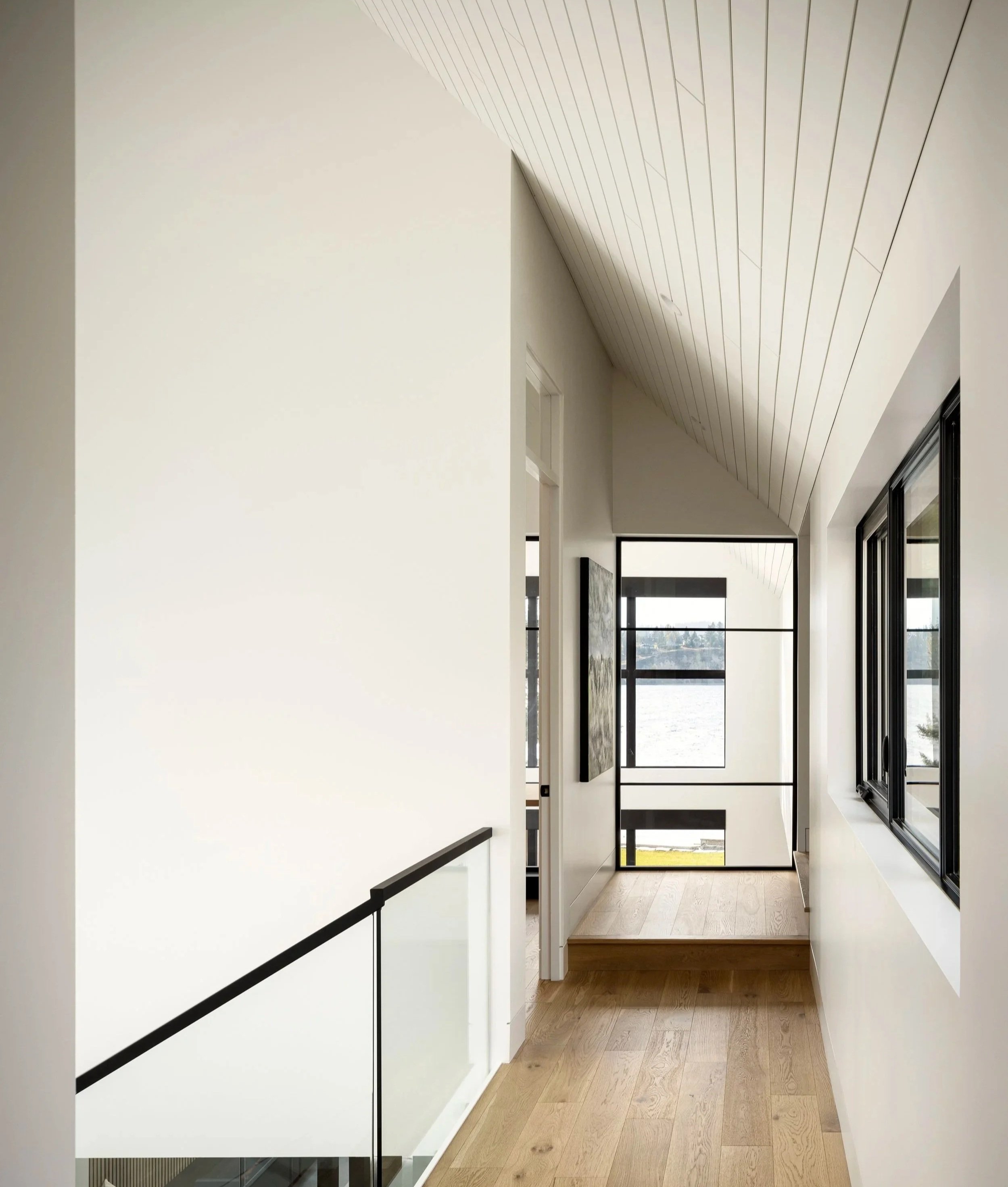When you step into a room, your eyes do something subconscious: they search for direction. That first glance—the place your gaze lands, the path it follows, the pause it takes—defines how you’ll experience the space. Designers call these sight lines, and when done right, they can turn an ordinary room into a home that feels and looks flawless.
Sight lines are the quiet stage directions of design, guiding your eye through a space, connecting one moment to the next, and setting the agenda for what is important. Luxury isn’t about adding more, it’s about choosing carefully. One common mistake we see is too many competing elements in a room. When everything is important, nothing is important. the eye doesn’t know what line to follow, and the space begins to feel cluttered. By simplifying the visual field through furniture arrangements, material and colour palettes, or thoughtfully placed art, we create an experience that feels clear and grounded.
Framing the experience
A good sight line tells a story the moment you walk in. In our Timber Ridge kitchen, we considered not only the island and cabinetry but also what you’d see beyond the space. Looking out the dining room, fir trim and stone details frame the view and beyond. Those materials informed the entire palette inside, creating a sense of continuity between the architecture, the natural surroundings, and the interiors. Everything is connected—it’s a composition in motion.
timber ridge kitchen renovation
Drawing the eye with intention
Sight lines also influence how you use a room. In our Invermere Lakehouse, a dining space overlooking the lake, the table itself became the guide: chairs aligned neatly along the sides form a corridor that leads the gaze directly to the mountains. It feels intentional, as if every meal begins with a moment of pause to take in the view.
invermere lakehouse new build
Great design isn’t just about how a room looks—it’s about how it feels to move through. Sight lines are the invisible threads that connect your home’s story, guiding your gaze, shaping your impressions, and elevating the ordinary. in the end, the beauty of your home isn’t only in the details you touch, but the experience of being in it.



